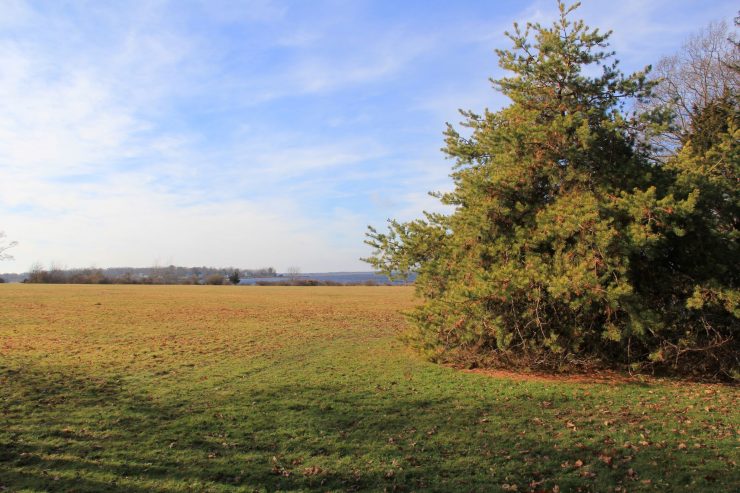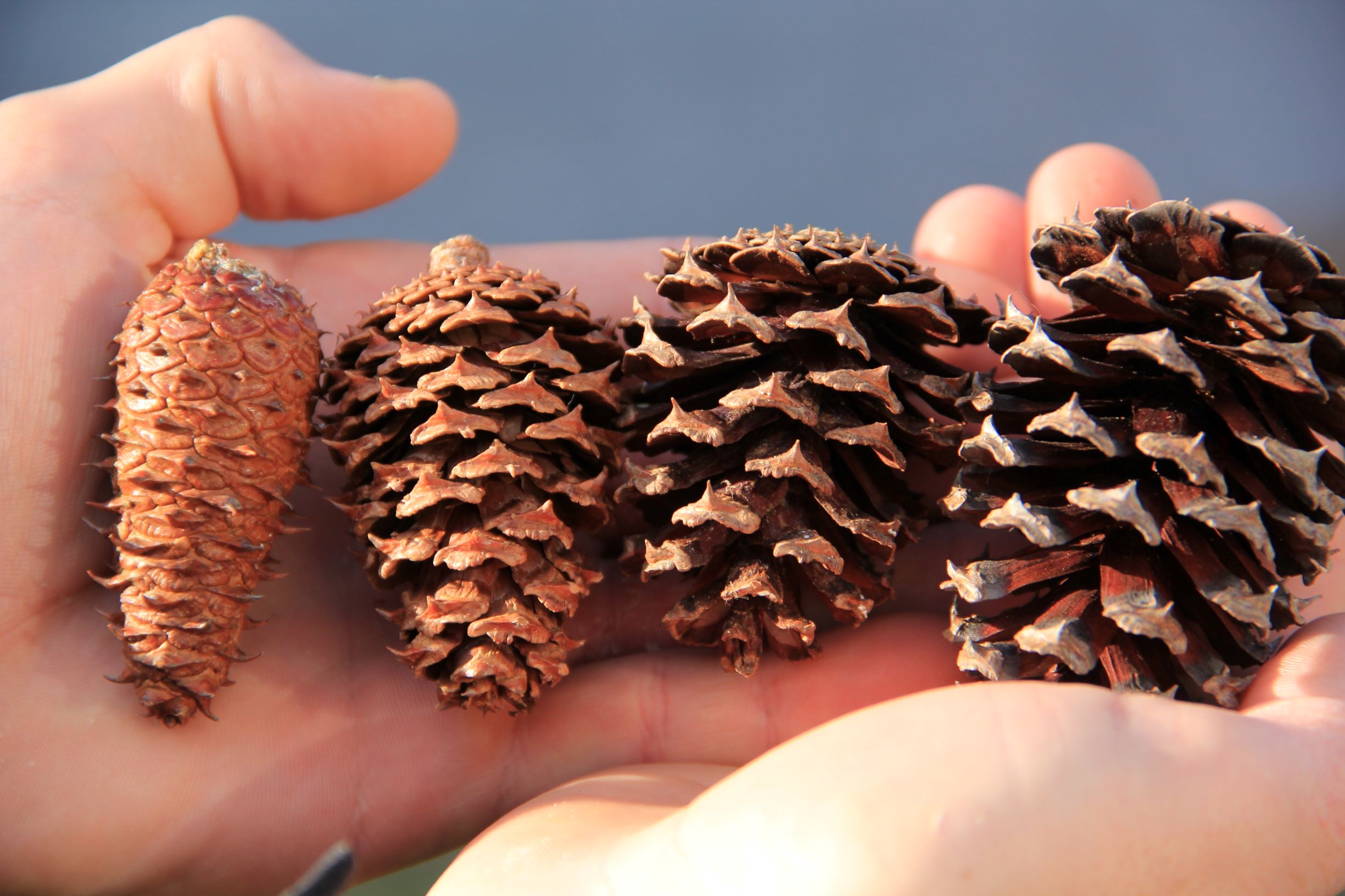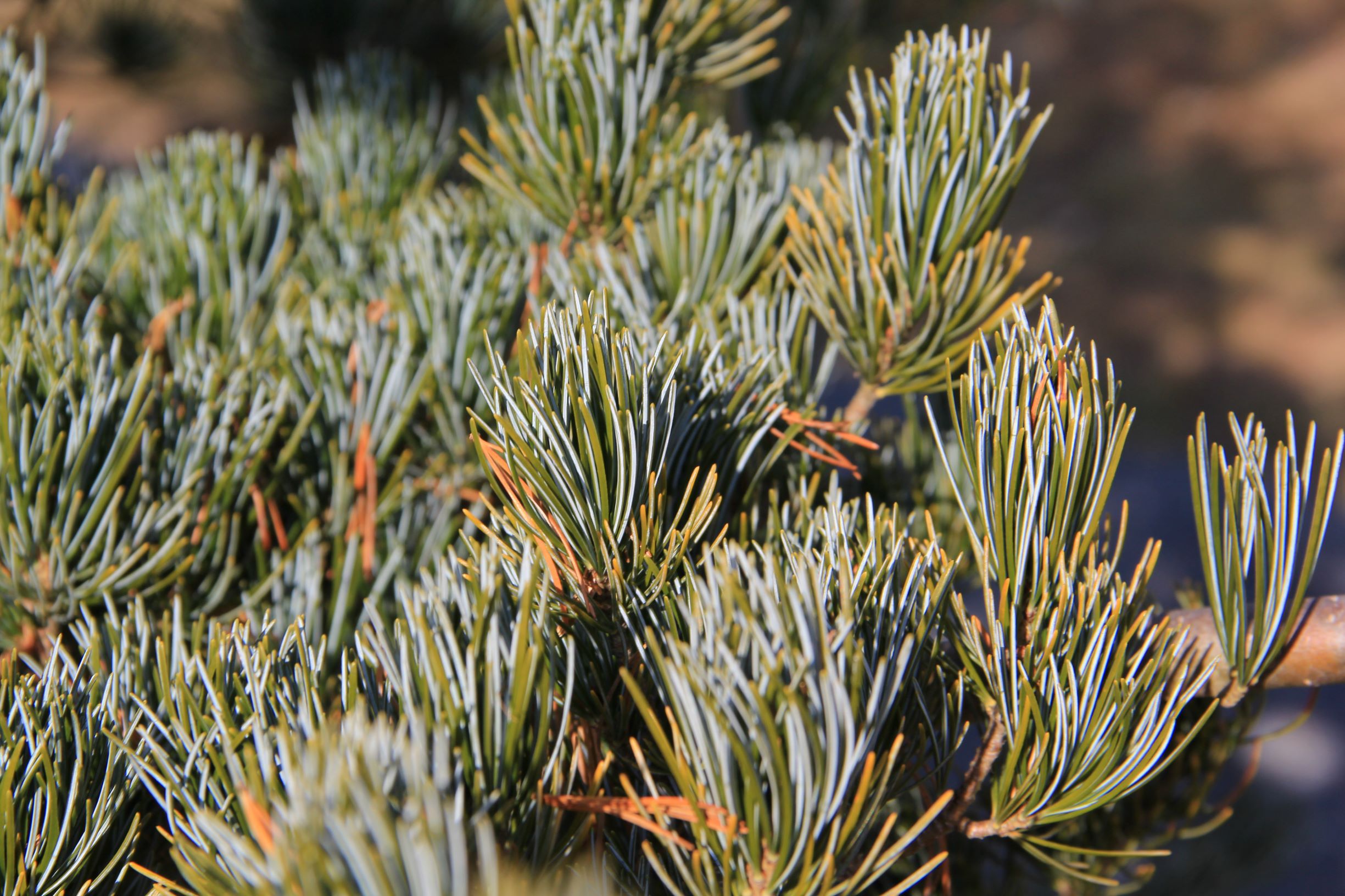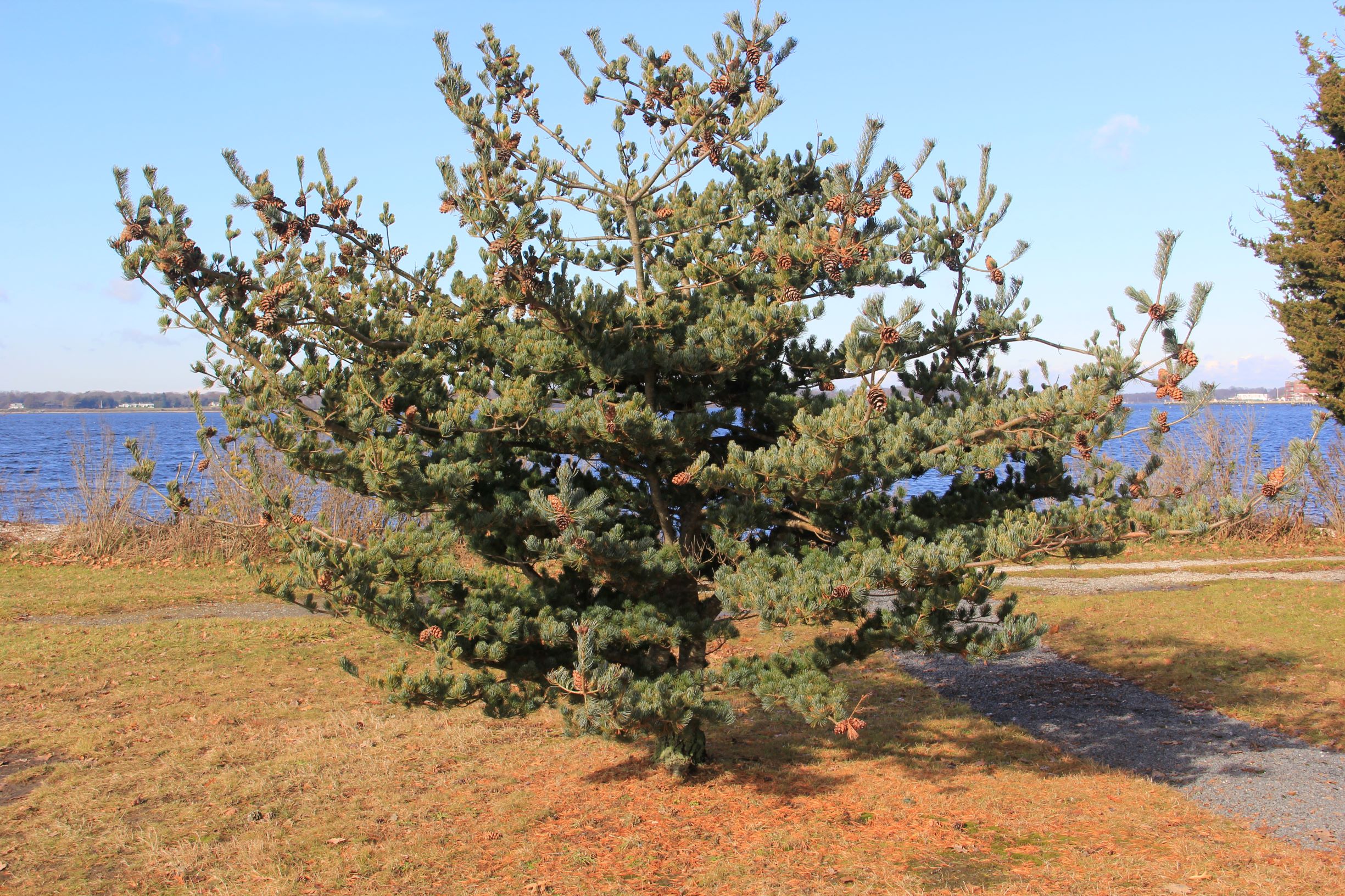Pine Alley

Crisp December air coming down from the endless clear sky surrounds me as I step out of the Bosquet and onto the shrub walk. The wind grows stronger as I approach the blazing blue water. My eyes water as they follow the horizon across the great lawn to Prudence Island across the bay. I almost forget where I am; forest, field and sea all meet as one. Towering trees dwarf me on both sides as my gaze travels from the horizon up into their expansive canopies. I look back down to see where I’m going, and something interesting appears. It glows in the sunlight and my eyes can’t look away.
Built like a large, dense shrub with twisted growth that mats together to form a shag carpet, Virginia Pine (Pinus virginiana ‘Wates’) commands the eye (above). Common in dry uplands throughout the eastern United States, Virginia Pine often has a lime-green color in the wild. The ‘Wates’ variety here at Blithewold is one of several cultivars of Virginia Pine to hold a yellow hue, which is especially prominent in midday sun. As I circle the tree, I notice many cones in various developmental stages, neatly organized in sets of two on opposite sides of the branch.

A close up look at the developemental stages of the Virginia Pine (Pinus Virginiana ‘Wates’) cones.
I finally decide to leave the Virginia Pine to itself and carry on my way. I’m drawn to the water’s edge, and just before I arrive another interesting conifer greets me. Smaller and more symmetrical than our Virginia Pine, Japanese White Pine (Pinus parviflora) stands strong with nothing behind it but air and sea. The tree’s shape is stout and widest in the middle, and cones make their home at the end of almost every limb. The needles are light green with white stomatal stripes, mixing together to form a steel blue when I take a few steps back. As indicated in its name, Japanese White Pine hails from Japan, as well as Korea. A number of cultivars have been produced and are common in the developed landscape, many of them baring irregular or stunted growth.

A great shot of the white stripes or stomatal bands present on the Japanese White Pine (Pinus parviflora) needles. Stomatal bands are areas with a high density of stomata, or microscopic openings which release and take in water and air.
I feel it’s time to head in and warm up, I’m starting to shiver under my winter jacket. The elements don’t seem to distress these pines; they seem lonely but content with their unique surroundings.

Japanese White Pine looking quite cheerful right next to Narragansett Bay.
